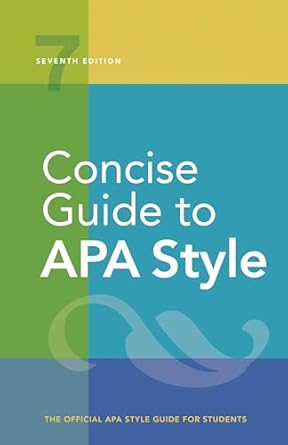[toc]
citing audiovisual media a comprehensive guide
Concise Guide to APA Style: 7th Edition (OFFICIAL)
Page 299 Review
Navigating Citations in Audiovisual Media: A Deep Dive
This excerpt from an ebook delves into the intricacies of citing various forms of audiovisual media according to a specific citation style, likely APA.
It provides guidance on citing tests, scales, inventories, and different types of audiovisual content.
Let’s break down the key aspects:
Citing Tests, Scales, and Inventories
The text highlights the importance of citing tests, scales, and inventories appropriately.
It distinguishes between citing the test itself and citing supporting literature like manuals.
- When to cite the test: “Cite the test, scale, or inventory only if a manual or other supporting literature is not available.” This indicates that if a comprehensive manual or related publication exists, it should be the primary source for citation.
- When to cite the manual: “If a manual is available for a test, cite the manual, not the test.” This emphasizes the manual’s role as a more detailed and authoritative source of information compared to the test itself.
An example is provided using “Project Implicit. (n.d.).
Gender—Science IAT.” This demonstrates a case where the test itself is cited, presumably because a more comprehensive manual is unavailable.
Citing Database Records for Tests
The excerpt then addresses the citation of database records for tests, often found in databases like PsycTESTS or ETS TestLink.
- Purpose of database records: “Test database records (e.g., records from PsycTESTS, the ETS TestLink collection, or the CINAHL database) typically provide unique descriptive and administrative information about tests.” This clarifies that these records contain specific details not always found elsewhere.
- When to cite the database record: “Cite the database record if you use this unique information.
Otherwise, cite the test’s supporting literature, if available.” This rule prioritizes citing supporting literature when available, but acknowledges the need to cite database records when they offer unique data.
Examples are given, such as “Alonso-Tapia, J., Nieto, C., Merino-Tejedor, E., Huertas, J.
A., & Ruiz, M. (2018).
Situated Goals Questionnaire for University Students (SGO-U, CMS-U) [Database record].
PsycTESTS. https://doi.org/10.1037/t66267-000″ and “Cardoza, D., Morris, J.
K., Myers, H.
F., & Rodriguez, N. (2000).
Acculturative Stress Inventory (ASI) (TCO22704) [Database record].
ETS TestLink.” These examples showcase the format for citing database records, including the authors, year, title, and database information.
Citing Audiovisual Media
The text transitions to the citation of audiovisual media, categorizing it into visual and audio components.
The general advice for citing audiovisual media is provided:
“Audiovisual media may have both visual and audio components (e.g., films, TV shows, YouTube videos; see Section 10.10), audio components only (e.g., music, speech recordings; see Section 10.11), or visual components only (e.g., artwork, PowerPoint slides, photographs; see Section 10.12).” This indicates a broad definition of the media being discussed.
“The formats for audiovisual references follow a pattern based on whether the work stands alone (e.g., films, whole TV series, podcasts, webinars, music albums, artwork, YouTube videos) or is part of a greater whole (e.g., TV series episodes, podcast episodes, songs from a music album).” This introduces the main difference in the citation format – whether the cited media is an independent item or part of a series.
In summary, the excerpt offers a detailed guide on citing diverse sources, focusing on the nuances of tests, scales, inventories, and various forms of audiovisual media.
The use of parenthetical and narrative citations is also briefly introduced.
Understanding these citation rules is essential for academic integrity and accurate attribution of sources.
Buy full ebook for only $18: https://www.lulu.com/shop/american-psychological-association/concise-guide-to-apa-style-7th-edition-official/ebook/product-rmzpq54.html?page=1&pageSize=4
Citing Audiovisual Media A Comprehensive Guide
Read more: APA In-Text Citations: Master the Rules & Avoid Plagiarism

